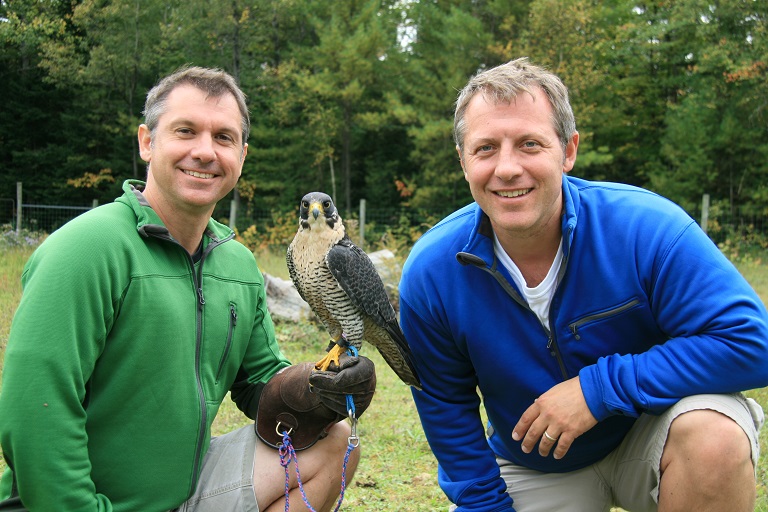- The film “Wild Kratts: Spirit Bear” is a finalist for Best Engaging Youth Film at the Jackson Hole Film Festival. The festival is considered to be the “Oscars of nature filmmaking” and received over 1,000 entries for 25 awards.
- Wild Kratts is a mixed live and animation youth conservation education cartoon series.
- The “Wild Kratts: Spirit Bear” episode highlights a special subspecies of the North American black bear that has white fur.
An episode of the popular cartoon Wild Kratts has been named a 2017 finalist in the biannual Jackson Hole Wildlife Film Festival competition. Drawn from a pool of over 1,000 entries competing for only 25 awards, finalists include a diverse range of entries. “Wild Kratts: Spirit Bear” was nominated for finalist for Best Engaging Youth Film.
The mixed live video and animation film tells the story of the importance of bears and presents a popular scientific hypothesis about the origin of the white fur of the so-called spirit bear, or the Kermode bear. The spirit bear is a rare subspecies of the American black bear. The bear can be found in the central and north coastal regions of British Columbia in Canada.
Mongaby interviewed Chris Kratt, who makes Wild Kratts with his brother Martin, by email.
Mongabay: What led you and your brother to create Wild Kratts?
Chris Kratt: Martin and I have been making wildlife programs for decades. Our previous work, like Wild Kratts, Zoboomafoo, and Be The Creature were all wholly live action, filmed in various locations around the world. When creating the Wild Kratts series, we thought what if we could make a series that utilizes both live action and animation, and combines them in a way that maximizes story elements and natural history content for the kid’s audience.
The result is the Wild Kratts series, which looks at animals in terms of their amazing “creature powers.” The animated portion allows us to showcase wildlife behaviors that are difficult, or sometimes even impossible to film, plus allows freedom for dramatic storytelling complete with “creature power suits” and “miniaturizers” and more.
The live action portions allow us to showcase the animals, habitats, and behaviors in a real life context, sometimes also including the cutting edge work of scientists and other wildlife experts. The resulting mix has been a popular and powerful way to support kids’ excitement about animals with whom we share this planet.

Mongabay: Kids love watching Wild Kratts and parents love the educational aspect. What role do you think education plays in conservation?
Chris Kratt: Of course, education is the critical first step to conservation. If you want to protect animals, you need to understand their lifestyles, their challenges, and their needs.
We’re proud to play a role in providing so many kids with that critical solid foundation in both natural history and STEM science. And equally important is for people to have a genuine, visceral excitement for animals and nature. Everybody wants to preserve things that they love and enjoy having around.
We hope that our programs get people excited about the world we live in, so that taking care of it remains a priority as they grow up to become decision-makers and stewards of the future.
Mongabay: What do you hope audiences take away from your show and this episode in particular?
Chris Kratt: In each episode of Wild Kratts, we layer an age-appropriate science concept in amongst the natural history information. For example, we address the concept of gravity when talking about peregrine falcons and their ability to reach great speeds with their “stoop.” We teach about batteries and electrical circuits in an episode about electric eels.
In this episode [nominated for an award], we tackled concepts of light brightness and contrast, by pointing out a leading hypothesis for the white fur of the Spirit Bear. The challenge, and the gratification, comes from trying to find the best, most entertaining way to convey these science concepts to our audience in an understandable way.
Mongabay: What makes this particular episode special?
Chris Kratt: We think the designers, animators, and the entire production team did a particularly good job executing this in this episode and we hope kids come away understanding the world a little bit more after watching this episode.
“Wild Kratts: Spirit Bear” also marks the debut of a new comic villain for the series. It’s always fun to work on new characters as you develop their personality traits and quirks – and, as with every character in the series, we hope this character helps the audience understand our fellow creatures.
Mongabay: What’s next?
Chris Kratt: For the future, more Wild Kratts epsiodes are on the way! We are in production on 20 new episodes for Season 5, featuring lot of animals requested by fans, including King Cobras, Tigers, and Penguins. So look out for those!
FEEDBACK: Use this form to send a message to the author of this post. If you want to post a public comment, you can do that at the bottom of the page.
